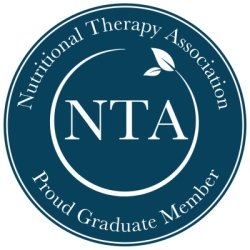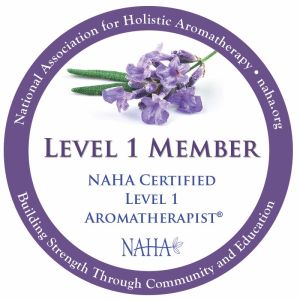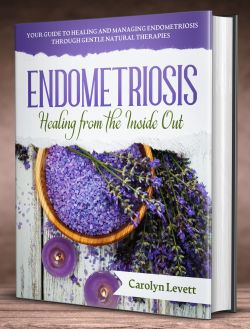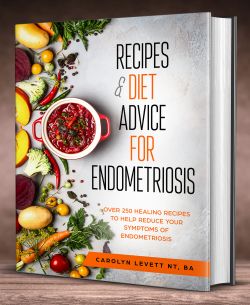Endometriosis and Prostaglandins
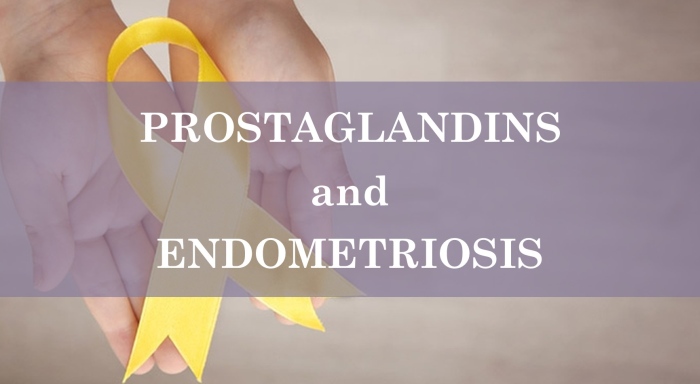
This article helps to explain why and how you experience pain with endometriosis?
Our bodies experience pain through messenger hormones travelling through the body and they end up passing these messages to the brain. Our brains then register this message as a ‘pain’ response and we then feel that pain. This pain response alerts the body to a threat – like a cut, being injured, suffering inflammation within the body etc.
If you cut off these messenger hormones your brain will not register this pain. These hormones are called prostaglandins and they are found throughout your body. There are two types of prostaglandins in the body – ‘good prostaglandins’ and’ bad prostaglandins’. The bad ones are called Antagonistic Prostaglandins:
Bad Prostaglandins cause:
- Pain
- Inflammation
- Fever
- Blood clotting
This is a long read but will help you understand why you are feeling pain with endometriosis and how to make adjustments in your diet to reduce your pain symptoms and the inflammation caused by endometriosis.
Introduction
Prostaglandins were first discovered and isolated from human semen in the 1930s by Ulf von Euler of Sweden. Thinking they had come from the prostate gland, he named them prostaglandins.
It has since been determined that they exist and are synthesised in virtually every cell of the body. Prostaglandins are like hormones in that they act as chemical messengers, but they do not move to other places in the body. They work right within the cells where they are made.
Functions of Prostaglandins - some basics
They have a variety of physiological effects on the body including:
- Activation of the inflammatory responses at the sites of damaged tissue, and production of pain and fever. When tissues are damaged, white blood cells flood the site to try to minimise tissue destruction. Prostaglandins are produced as a result.
- Blood clots form when a blood vessel is damaged. A type of prostaglandin called thromboxane stimulates constriction and clotting of platelets. Also the opposite happens and prostaglandin 12 (PG12) is produced on the walls of blood vessels where clots should not be forming. ( The body is very, very clever. It knows what to do, where to do it and when.)
- Certain prostaglandins are involved with the introduction of labour and other reproductive processes, and the role of fertility. PGE2 causes uterine contractions and has been used to induce labour.
- They are involved in several other organs and systems such as the gastrointestinal tract, cell growth and the immune system response.
Dictionary Definition
Prostaglandins - any of a group of about a dozen compounds synthesised from fatty acids in mammals as well as in lower animals. Prostaglandins are highly potent substances that are not stored but are produced as needed by cell membranes in virtually every body tissue. Different prostaglandins have been found to raise or lower blood pressure and regulate smooth muscle activity and glandular secretions.
One such substance, which stimulates contraction of the uterus, is used clinically to induce labour; another has been in experimental use as a birth control agent. Prostaglandins also control the substances involved in the transmission of nerve impulses, participate in the body’s defences against infection, and regulate the rate of metabolism in various tissues.
Several prostaglandins have been shown to induce fever, possibly by participating in the temperature-regulating mechanisms in the hypothalamus; they also play a part in inflammation. Many naturally occurring prostaglandins as well as many artificial forms have been synthesised in the laboratory
Prostaglandins as chemical messengers
Prostaglandins vary somewhat from one another based upon subtle differences in their chemical structures. These small variations are believed to be responsible for the immense diversity of effects they have on the body.
In general, prostaglandins act in a manner similar to that of hormones, by stimulating target cells into action. However, they differ from hormones in that they act locally, near their site of synthesis, and they are metabolised very rapidly. Interestingly, the same prostaglandins act differently in different tissue. (The in-built intelligence of the human body, that we will never understand)!
Research into prostaglandins
Early studies of prostaglandins carried out by researchers revealed that these substances were active, and capable of producing many actions in the body including lowering blood pressure and instigating the contraction of uterine tissue. Later research revealed much more, including the fact that they can be found in almost all body tissue since they are not restricted to specific organs.
Prostaglandins, it was also discovered, are only active for a short period of time before they are modified into a non-functional form and are subsequently excreted from the body. So tissue cannot store prostaglandins, but must instead synthesise them in a nearby area when needed.
Approximately a dozen different prostaglandins have been identified to date, each of which is associated with different kinds of activities and effects on various kinds of tissue. One important activity of a group of prostaglandins is facilitating the relaxation of the muscle walls and the delineate blood vessels, effectively dilating them.
Working in conjunction with thromboxanes, prostaglandins play an equally important role in blood clotting, and the balance between the two kinds of substances essentially control whether or not coagulation occurs. Also, many prostaglandins induce inflammation and the constriction of muscle tissue, while certain prostaglandins are believed to be involved in the inhibition or promotion of activities such as ion transport, cell growth, temperature regulation, and immune system response.
Prostaglandins in bite sizes! The science bit
Skip to the summary below if the in-depth details make you glaze over
- Prostaglandins are a subset of a larger family of substances called eicosanoids
- Other subgroups include thromboxanes, leukotrienes and lipoxins (just out of interest!)
- Eicosanoids are localised tissue hormones that seem to be the fundamental regulating molecules in most forms of life
- Prostaglandins are chemical mediators, or ‘local’ hormones. Whereas hormones circulate in the blood stream to influence distant tissues, prostaglandins act locally on adjacent cells
- Prostaglandins serve as a catalyst for a large number of processes including the movement of calcium and other substances into and out of cells, dilation and contraction, inhibition and promotion of blood clotting, regulation of secretions including digestive juices and hormones, control of fertility, cell division and growth
- Prostaglandins are produced in the cells by the action of enzymes on essential fatty-acids
- From the discoveries to date of the number and complexity of prostaglandins, they have been divided into ‘Series’ type prostaglandins. Most commonly known to women with endometriosis are the prostaglandin Series 1 and Series 2 for their opposing effects or cause on pain messengers and inflammation
- In simple terms, the Series 2 prostaglandins play a role in swelling and inflammation at sites of damage or injury. They also play a role in inducing birth, in regulating temperature, lowering blood pressure, and in the regulation of platelet forming and clotting. The role of Series 2 Prostaglandins does serve a vital role for the body for without it you would bleed to death from the slightest cut. However, in excess, these prostaglandins are harmful and many diseases are directly linked to excessive inflammation and blood clotting
- Series 1 prostaglandins have the opposite effect of the Series 2 prostaglandins. Series 1 reduce inflammation, dilate blood vessels, and inhibit blood clotting. The strong anti-inflammatory properties help the body recover from injury by reducing pain, swelling and redness.
- No doubt this is a simplistic definition of the role of these different substances, which will be more complex and subtle, but research is still being done into how prostaglandins work.
- More recent research has focused on the balance between Series 2 and Series 3 prostaglandins. The Series 2 group is involved in intense actions, often in response to some emergency such as injury or stress. The Series 3 group has a modulating effect.
- The Series 3 prostaglandins are formed at a slower rate and work to deal with excessive Series 2 prostaglandin production.
- Many of you will have heard the term ‘Antagonistic Prostaglandins’ - in simple terms this means unfriendly prostaglandins
- Antagonistic prostaglandins are made from a fatty acid called arachidonic acid (I can’t help thinking of spiders when that term is used - arachnid being the generic term for spiders, but this word seems relevant as spiders and other arachnids like scorpions are classed as ‘8 legged aggressive predators’. The same can be said of the predatory nature of antagonistic prostaglandins.)
- Aracidonic acid is obtained from animal products - meat and dairy
- Arachidonic acid can also be made from another fatty acid linoleic acid, through the animal food chain consumption
- Linoleic acid is a fatty acid found in plant oils, such as corn oil, soybean oil, and other light vegetable oils. We also obtain linoleic acid from meat and dairy products (because the animals eat plants and store Linoleic acid)
- Beneficial prostaglandins are made from a fatty acid found mostly in marine plants and fish known as EPA (eicosapentaenoic acid)
- EPA is the most important member of an exclusive group of three fatty acids called the "omega-3 fatty acids"
- This group includes alpha linoleic acid (ALA), eicosapentaenoic acid (EPA), and docosahexaenoic acid (DHA)
- ALA is made in the chloroplasts of green plants from linoleic acid. In mammals, linoleic acid is converted to arachidonic acid that is used to make the antagonistic prostaglandins. BUT, in the green plant the same linoleic acid is converted into the beneficial ALA
- ALA is important because it serves as the building material for EPA
- EPA is the most critical of the omega 3 fatty acids. It is the only material that our bodies use to make the beneficial prostaglandins that help reduce inflammation
- DHA is another omega 3 fatty acid. It is an integral part of eye and brain tissue. It is made by marine algae, plankton, fish and mammals from EPA. Fish accumulate DHA in their oily tissue, along with EPA
- It is now known that an excess of oleic acid (found chiefly in olive oil and nuts), known as the essential fatty acid group (EFA), will inhibit the prostaglandin pathway. But the block being set up is one which will inhibit the Series 2 prostaglandins - the ones which cause inflammation and swelling. Which is why women with endometriosis are advised to change the oil in their diet to only include the oils which will block Series 2. Evening Primrose Oil, Fish Oils, Flax seed oil, and Borage oil, which contain omega-3 fatty acids are also used by women with endometriosis to help shift the balance of prostaglandins and reduce the inflammatory action caused by Series 2 prostaglandins
- Aspirin, a non-steroidal anti-inflammatory, was discovered over 100 years ago. It works by blocking prostaglandins that are produced in inflamed or injured tissues and cause the sensation of pain. It also acts centrally: the salicylate and acetate parts of aspirin's chemical structure (aspirin is acetyl salicylic acid) cross separately into the brain and spinal cord. There they act on prostaglandins in sites in the central nervous system known to be involved in both the perception and transmission of pain.
- Prostaglandins are released by the endometrium during the menstrual cycle. Some women release more prostaglandin during menstruation than other women. These higher levels of prostaglandins in women with severe dysmenorrhea (painful periods) results in increased uterine contractions and muscular spasm.
Summary to prostaglandins
There are 2 groups of prostaglandins which are most relevant to endometriosis - Good or Bad.
Good - take part in the normal functions of the body without contributing to the processes which cause the negative effects of endometriosis
Bad - take part in the functions of the body which contribute to endometriosis symptoms and its negative effects i.e. pain, inflammation, digestive disturbance, connective tissue damage.
The way your body produces different types of prostaglandins can be controlled by what you include in your diet by consumption of different oils and foods. Some foods and oils will promote the negative prostaglandins because of subtle chemical reactions. In turn, other foods and oils will block that chemical reaction and stop the negative prostaglandins from being produced.
These potent chemicals act at an atomic level and are not always present in the body. They are produced in reaction to a sudden change or shock or injury in the body.
Our bodies will produce them to act as warning signals, or to provide support to damaged tissue. The dual roles of prostaglandin Series 1 and 2 seem to be contradictory, but we obviously need both types of prostaglandins for the repair, maintenance and survival of the body.
If we did not suffer pain then we would not be alerted to the problem of damage within the body. Suffering pain is distressing, but in turn it is also telling us that something is wrong.
It is fortunate that we now know how these particular prostaglandins work (be it in simple terms), so that women with endometriosis are able to alter the balance of prostaglandin production to reduce their symptoms by reducing the Series 2 prostaglandins, and aim to increase the Series 1 prostaglandins through their diet and with supplements.
How Prostaglandins relate to controlling endometriosis
Read here

About the Author
My name is Carolyn Levett, the Founder of endo-resolved - I am an Integrative Health Coach having studied nutrition, naturopathy, aromatherapy as well as being a published author. I used to suffer from severe endometriosis and was able to regained my health and heal from the disease with the support of nutrition and natural therapies.
My motivation is to help other women with endometriosis to heal their bodies so they may overcome this awful disease without having to rely on toxic drugs and surgeries which can cause further damage - with healing thoughts, Carolyn.
Reference:
https://en.wikipedia.org/wiki/Prostaglandin
https://www.ncbi.nlm.nih.gov/pubmed/20511671
https://www.ncbi.nlm.nih.gov/pubmed/22003899
https://endometriosis.org/news/research/prostaglandins-cox2/
https://www.yourhormones.info/hormones/prostaglandins/
 As featured in:
As featured in:

